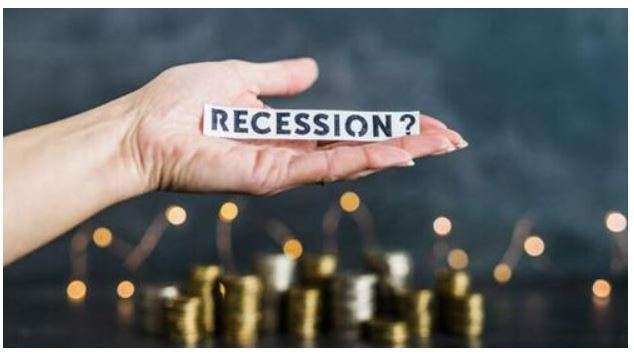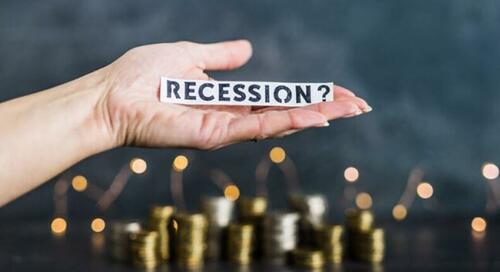Authored by James Rickards via DailyReckoning.com,
Analyzing today’s economic conditions is a challenge.
If the world is in good economic health, you can describe the policy reasons behind that condition and identify specific stocks and sectors that will outperform the market.
You’d point to trends such as low inflation, positive real interest rates (a sign of strong growth resulting from a healthy competition for funds) and stable exchange rates (indicating that investment decisions are made on the basis of fundamentals rather than speculation).
If the world is in poor economic health, the analytic process is much the same but with very different inputs and forecasts.
You’d expect to see widespread inflation (or deflation), high unemployment, declining GDP growth (or negative growth), declining world trade and a host of poor public policy choices including high tax rates, tariffs, export subsidies, overregulation and counterproductive policies based on climate alarmism.
In either the good scenario or the bad scenario, the analyst knows how to approach policy recommendations or investment allocations.
Without being glib, if you’re in a good place, keep it going. If you’re heading in the wrong direction, turn around.
Well, what if we had both dynamics at once?
That’s a pretty good description of where the world is today. The U.S. is a good place to draw the contrast between good and bad news.
The U.S. has some of the lowest unemployment rate readings since the 1960s. Real wages have finally begun to grow slightly after years of negative readings.
Inflation is still too high (and the damage from past inflation will be with us permanently), but the dip has been undeniable. From 9.1% in June 2022 to 3.0% in June 2023, inflation (measured as CPI, year-over-year) has come far toward the Federal Reserve’s goal of 2.0%.
Of course, the stock market has been on a tear and some major indexes are inching toward new all-time highs or already there. No wonder that Joe Biden has decided to base his campaign on “Bidenomics.”
Still, the negative side of the picture is in plain sight.
U.S. industrial production has been declining for over a year. Some economists claim that manufacturing is a shrinking part of U.S. GDP and that services dominate economic growth.
That’s true as a first approximation, but it ignores the fact that much demand for services comes from those who work in factories, mines and assembly lines.
If the factory is closed, no one laid off will be buying tickets to the Taylor Swift concert.
Also, bank lending is contracting, and credit conditions are being tightened. This doesn’t mean a full-scale credit crunch is upon us or that the economy is falling off a cliff.
It does mean that a trend toward reduced liquidity is in place and will likely grow worse until it leads to business failures and bad debts.
What about the world beyond U.S. shores?
The EU is already in recession and Japan and the U.K. are close to zero growth and heading toward recession fast. Within the EU, individual recessions have hit in Germany and Ireland, with Italy and France showing growth barely above zero.
The idea of a real recession in China may seem incomprehensible, but we may be witnessing one.
The “reopening” narrative following the end of the ridiculous Zero COVID policy was always a myth (and I said so last year) but Wall Street bought into it until the data made its failure undeniable.
Today, China is not only underperforming the narrative, it’s slipping close to contraction.
The point is with the EU, China, Japan, the U.K. and others in recession or close to it, how can the U.S. expect to remain afloat?
Globalization may be on the decline, but it’s still the dominant path to global production. Aggregate world trade may be shrinking, but it’s still a large part of global GDP on a country-by-country basis.
How can the world shrink while the U.S. grows?
That won’t happen unless U.S. growth is so strong it pulls the world out of a collective rut. There’s no evidence for that. So there’s the dilemma.
Ample signs of growth are surrounded by large and growing signs of an economic stall. The U.S. is showing relatively strong growth, while the rest of the world coasts to a halt.
How do we reconcile the data? Where do we go from here?
Read on for the answers…
Time Will Catch up to the U.S.
Why does the U.S. economy look so strong in comparison with the rest of the world? The answer is timing.
The economy does not go from growth to recession like throwing a switch. It takes time.
The positive signs are real but they’re fading. The negative signs are real and they’re growing. Some data lead the economy; other data follow with a lag. It’s the analyst’s job to know which is which, and to focus on trends, not snapshots.
First off, low unemployment may not be a source of comfort because employment trends tend to lag the economy. The latest unemployment report (July’s) showed an unemployment rate of 3.5%, among the lowest since the 1960s.
That’s a healthy report on its face but there are two serious characteristics that need to be taken into account. The first involves what’s known as the labor force participation rate (LFPR).
This counts all of the working-age population of the U.S. who do not have jobs as a percentage of the total working-age population. That’s different from the unemployment rate because to be counted as “unemployed” you must be looking for a job.
There are tens of millions of working-age Americans who do not have jobs but are not looking for one. They are not counted as unemployed, but they do show up in the LFPR calculations.
Right now, the LFPR is 62.6%. That’s the same level the U.S. first reached in November 1977 when women were entering the workforce in large numbers. It’s significantly below the 67.2% level reached in January 2001, when baby boomers were in the prime of their careers. Essentially, 6.7 million workers have simply dropped out of seeking work relative to 2001.
If those 6.7 million workers were added to the number of unemployed today, the national unemployment rate would be 7.6%, a rate more closely associated with a recession. In effect, the low participation rate is hiding a large unemployed cohort not being counted by the government in the official employment report.
The second and even more critical defect in using employment statistics in economic forecasting is that employment reports are lagging indicators, not leading indicators. When the economy begins to slow down, businesses will do everything except lay off workers to keep the doors open.
They’ll cut inventories, lower prices, seek rent reductions, cut administrative costs and a lot else before they fire valuable workers. All of those strategies are clear signs of a failing economy, but they don’t show up in the employment reports.
By the time employers get around to firing workers, it’s too late for the economy. So you can’t rely on low unemployment rates to conclude all is well. The opposite could easily be true.
Still, there are powerful indicators suggesting the U.S. economy is in or near a severe recession in addition to better-known measures such as the unemployment rate. The first of these is an inverted yield curve.
I’m not going to get too technical here, but it’s important to understand the basics and their implications. A yield curve shows interest rates on securities of different maturities from one issuer or it can show interest rates on a single instrument at different points in the future.
In either case, the curve is normally upward sloping (longer maturities or later settlement dates have higher interest rates). That makes sense. If you’re lending money for longer or betting on rates further into the future, you want a higher interest rate to compensate you for the added risk from such events as inflation, credit downgrades, bankruptcy and more.
Yield curves in U.S. Treasury securities are steeply inverted today. So are yield curves in SOFR (formerly Eurodollar) futures contracts. Again, don’t worry about the technical details. Just understand that these are important warning signals. The last time both yield curves were this steeply inverted was prior to the global financial crisis of 2008.
If you’re not factoring this signal into your forecast, you’re missing a five-alarm fire. The system is flashing red.
There are many other such warning signs such as negative swap spreads. Without getting into the technical details, it’s enough to understand that negative swap spreads mean that bank balance sheets are contracting. Balance sheet capacity is strained. That’s another early warning of a credit crunch that presages a recession.
There are other warning signs and, again, I’m not going to get into the technical details here. It’s enough to say that all of the technical signs are unusual and all point in the direction of a recession. They all have good track records of predicting recessions going back to the 1970s and earlier depending on the time series.
So in the U.S., the fundamentals (industrial output, global trade, inventory accumulation, credit, commercial real estate) are negative. The technicals (yield curves, swap spreads, bank equity) are negative. The only positives are unemployment (a lagging indicator) and the stock market (a cap-weighted bubble). Unfortunately for investors, stocks and jobs are the only things the financial TV talking heads talk about. Don’t fall for it.
Investors who look abroad for rescue by former highfliers such as China, Japan and Germany will also be disappointed. China is slowing dramatically; the reopening narrative was always a myth.
Meanwhile, Japan is hanging by a thread partly because of its close economic alignment with China. Germany is already in recession and that will get worse as the Ukraine war drags on and one whom the Russians call General Winter appears by November.
It’s becoming increasingly apparent that we’re looking at a global recession, if not a global financial crisis. These are highly unusual. It’s often the case that one or more major economies are in recession while others display growth and help pull the weak performers out of the ditch.
But today, we’re facing a case where, one after the other, all of the major economies are falling into the ditch. Now, that doesn’t mean investors should just throw their hands up in the air and run for the hills.
But they should lighten up on equities, increase allocations to cash (paying good 5% yields these days), allocate about 10% of investable assets to gold and silver and take a close look at sectors such as energy, agriculture, mining and natural resources that will stand the test of time.
You don’t have to follow everyone else off a cliff.








